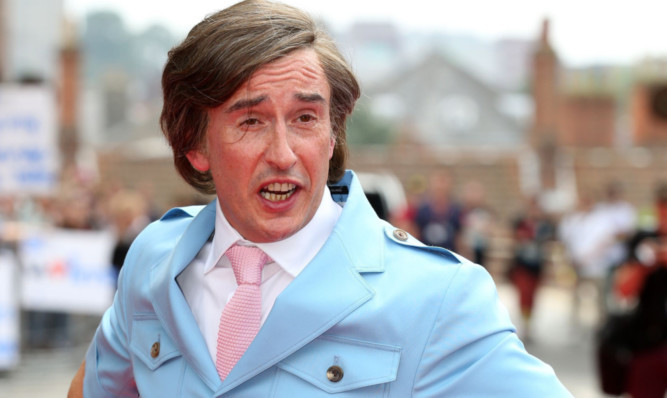
He’s gone from one of our most respected comedians to one of our most respected actors and writers as well.
Steve Coogan found fame with spoof TV presenter Alan Partridge in the 1990s, although I recall seeing him from even further back
I remember when he started doing funny sketches for The Krypton Factor, way before Partridge.
These days Steve is an Oscar nominee for his writing on the 2014 drama Philomena.
He’s starred in the critically acclaimed – and very funny – The Trip, and he won plaudits for his role in the rather excellent Stan & Ollie.
I caught up with Steve for a chat recently – and I wondered how he felt moving from being a funnyman, to being a funnyman who can also do the serious stuff very well.
“Everybody wants to not be pigeonholed, and I love the comedy I’ve done over the years,” he told me.
“But comedy is more interesting when it’s used as a kind of way of sugaring the pill of stuff that’s difficult to talk about.
“I never don’t want to be doing stuff that’s funny, but I like to do stuff where you use it in interesting ways.
“You can make people laugh and cry, and think as well.
“I’ll never abandon comedy, I’ll just do it in different ways, because I like to do cheap gags as well.”
Don’t worry, Steve – we all do.
The Mancunian was so good in Stan & Ollie, he recently won the Charlie Chaplin Britannia Award For Excellence, and he was a comedy hero of Steve’s.
“Charlie Chaplin understood artistic integrity, and the battle between art and commerce,” he said.
“He knew how to touch people and he used comedy to try to make people think.
“He was one of the first people to use comedy and poignancy and combine them together, which is why a lot of his movies were very touching.”
In terms of inspiration, Steve recalled sitting in front of the telly when he was younger – but he also liked listening to comedy.
“The BBC curated my taste so I’d watch reruns of old stuff like Laurel and Hardy, Charlie Chaplin movies they showed during the holidays, and the great British comedies like Monty Python and. Fawlty Towers,” he explained. “I liked Python because it was experimental and avant garde.
“And I also liked Dick Clement, he did The Likely Lads and Porridge. British comedy was important to me.
“But I also learned about American comedy, people like Bob Newhart, Bob Hope, Shelley Herman, Mel Brooks. All their stuff was on vinyl in those days.
“This wasn’t just pre-digital platforms – this was pre-VCR technology. Listening on vinyl was a good way to do it.
“Often when you listen to comedy rather than watch it, you pay more attention to the details. That was my education.”
Top of the class, Steve!

Enjoy the convenience of having The Sunday Post delivered as a digital ePaper straight to your smartphone, tablet or computer.
Subscribe for only £5.49 a month and enjoy all the benefits of the printed paper as a digital replica.
Subscribe